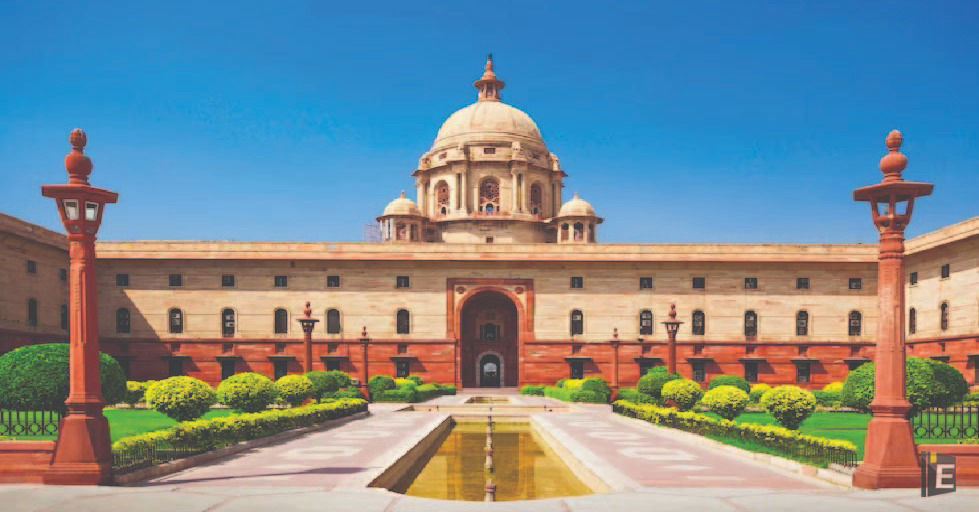Rajasthan GK Quiz Questions for Competitive Exams

In which work of poet Suryamall Mishra, the achievements of Maharaja Rao Surjan Singh of Bundi have been described?
(A) Vir Satsai
(B) Metallurgy
(C) Vansh Bhaskar
(D) none of these
Correct Answer : C
Explanation :
Suryamall Mishra (Meesan) (Samvat 1872 Vikrami - Samvat 1925 Vikrami) was the court poet of Hada ruler Maharao Ram Singh of Bundi. He composed a Pingal poetic book named Vansh-Bhaskar in which the detailed history of Bundi state as well as the history of Northern India and anti-Maratha sentiment in Rajasthan is mentioned.
The district of Rajasthan which receives maximum irrigation from the Bhakra-Nangal dam, is it?
(A) Hanumangarh
(B) Bikaner
(C) Churu
(D) Sriganganagar
Correct Answer : D
Explanation :
The total capacity of the Bakhra Nangal project is 14.7 lakh hectares. Rajasthan's share of 2.3 lakh hectares, has increased irrigation facility in Sriganganagar district and electricity availability in Bikaner, Sriganganagar, Churu, and Jhunjhunu districts of the state.
In which district is the Som-Kamala-Amba irrigation project located?
(A) Dugarpur
(B) Chittorpur
(C) Udaipur
(D) Banswara
Correct Answer : A
Explanation :
The Som Kamla Amba Dam project is situated in the Dungarpur district. The Dungarpur district can be found in Rajasthan. The purpose behind the Som Kamla Amba Dam project is water irrigation and storage.
In which state of India is the Siddhmukh Nohar Project located?
(A) Uttar Pradesh
(B) Gujarat
(C) Rajasthan
(D) Madhya Pradesh
Correct Answer : C
Explanation :
Basin involved in the project is Indus up to the International Border and Area of inland drainage of Rajasthan.
When was the Indira Gandhi Canal started?
(A) March 31, 1952
(B) 31 March, 1960
(C) March 31, 1970
(D) March 31, 1985
Correct Answer : A
Explanation :
Is the Kalpavriksha of the desert?
(A) Acacia
(B) Khejri
(C) Rohida
(D) Fogg
Correct Answer : B
Explanation :
Khejri, the state tree of Rajasthan is known as 'Kalpatharu of Thar'. Besides stabilising sand dunes and offering shelter in the desert heat, it serves the community as food, fodder, wood and medicine.
Which tree is the teak of Rajasthan?
(A) Tecomella undulata
(B) Acacia
(C) Well
(D) Khejri
Correct Answer : A
Explanation :
Tecomella undulata is a tree species, locally known as rohida found in Thar Desert regions of India and Pakistan. It is a medium-sized tree that produces quality timber and is the main source of timber amongst the indigenous tree species of desert regions of Shekhawati and Marwar in Rajasthan.
In which district are teak trees concentrated?
(A) Sirohi
(B) Baran
(C) Banswara
(D) Udaipur
Correct Answer : D
Explanation :
In Rajasthan, teak forests are found mainly in the district of Udaipur, Dungarpur, Jhalawar, Chittorgarh and Baran.
Where is Darra Wildlife Sanctuary situated?
(A) Kota
(B) Pali
(C) Ajmer
(D) Dholpur
Correct Answer : A
Explanation :
Darrah Wildlife Sanctuary is located in the Kota district of Rajasthan. It was established in 2004 It consists of three wildlife sanctuaries: Darrah Wildlife Sanctuary National Chambal Sanctuary Jawahar Sagar Wildlife Sanctuary.
Which animals cause maximum damage to vegetation in western Rajasthan?
(A) Sheep
(B) Bull
(C) Cow
(D) Camel
Correct Answer : C
Explanation :
Loss of soil cover mainly due to rain or wind and surface runoff is the biggest cause of desertification. Climate change' and' human activities can be considered as the two main causes of desertification. Removal of natural vegetation cover – agricultural activities in vulnerable ecosystems of arid and semi-arid regions, by taking too much fuel wood, which are thus strained beyond their carrying capacity. The following factors cause desertification: Climate change – particularly long dry periods, leading to drought. Too many animals within the area – leading to overgrowth. Population growth – decline in traditional, less intensive, farming methods. Rajasthan is the state with the highest area of desertification in terms of total geographical area. The state has 62.90% of the total geographical area under desertification and land degradation for the period 2011–13. The UNCCD defines desertification as 'land degradation in dry, semi-arid and sub-humid areas, resulting in



